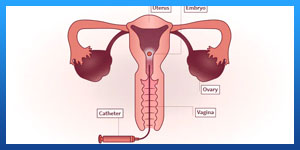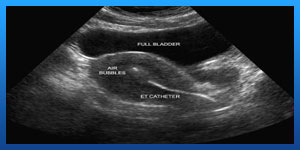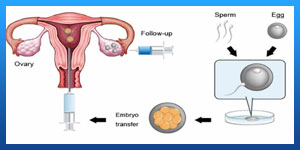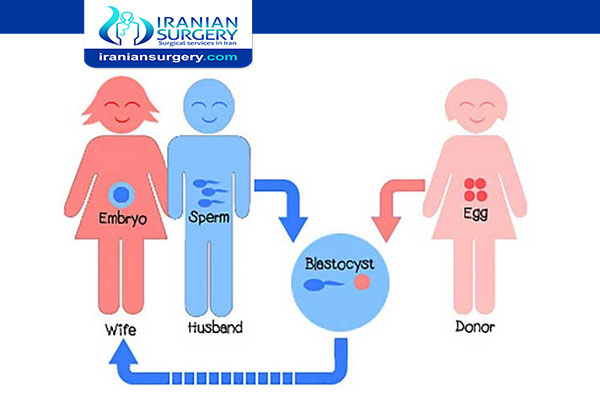How many days after period is frozen embryo transfer?
How many days after period is frozen embryo transfer?
How successful is frozen embryo transfer?
Before embryo transfer
What is the process for frozen embryo transfer?
What are the steps for frozen embryo transfer?
What cycle day is frozen embryo transfer?
How many days after period is frozen embryo transfer?
Once retrieved, the eggs are fertilized and grown in the IVF laboratory for five to six days, then frozen. About two weeks after the egg retrieval procedure, most patients will begin their natural menstrual period. On the second or third day of that cycle.
Embryo transfer is usually performed on the third to fifth day of progesterone therapy. As with natural cycle FET, embryos are thawed on the morning of the scheduled frozen embryo transfer. In our laboratory, approximately 60-70 percent of embryos survive cryopreservation and thawing.
A FET cycle will take approximately 6 to 8 weeks. A cycle typically begins with 3 to 4 weeks of daily birth control pills to suppress the normal ovarian cycle, as it would lead to ovulation. After the course of birth control, you will need a baseline assessment involving bloodwork and ultrasound.
Read more about : Surrogacy in Iran
Read more about : If not pregnant after ivf when does period start
Read more about : Do ivf babies look like mom or dad?

Read more about : IVF in Iran
Read more about : Egg donation in Iran
How successful is frozen embryo transfer?
Women using frozen embryos for transfer had a live birth rate of 74.5 percent as compared to women using fresh embryos with a live birth rate of 53.7 percent. In addition, we observed only a 2.8 percent miscarriage rate following CCS with a frozen transfer compared to 18.5 percent in the fresh transfer group.
Read more about 2nd iui success rate
Read more about: IVF with frozen donor eggs process
Before embryo transfer
Before embryo transfer on the morning of embryo transfer an embryologist will telephone you to let you know whether the embryos survived the thaw process and to give you a time to attend the unit for the replacement. This could be on the same day or after 1-3 days of embryo culture. You will be asked to attend with a full bladder, as an abdominal scan will be carried out to help the doctor with positioning the transfer catheter. The replacement procedure is relatively painless (similar to a smear test) and takes around 15 minutes. No anaesthetic is necessary and your partner can come into theatre with you. The embryologist will advise you on the number of embryos to be transferred. We aim to provide a good chance of success whilst keeping the risk of multiple pregnancy low, as this is associated with a higher risk of complications for both the mother and babies.

Read more about Virgin tightening surgery before and after
Read more about Ovarian cyst size chart
Read more about: frozen embryo transfer drugs
What is the process for frozen embryo transfer?
What are the steps for frozen embryo transfer?
Step 1 - Monitoring of Follicle Development
Monitoring of follicle development is often performed during a FET cycle by using transvaginal sonography. To determine the day on which you should begin monitoring, subtract seventeen days from the length of your menstrual cycle. For example, if it is 30 days from the first day of one menstrual cycle to the first day of the next, you should have your first ultrasound on approximately cycle day 13 (30-17=13). You will have other ultrasounds as your dominant follicle nears maturity. These ultrasounds will continue until we have documented ovulation.
Step 2 - Monitoring for LH Surge
As the growing follicle nears maturity, the level of the hormone LH in the blood and urine rises dramatically. This is known as the LH surge. For the purpose of frozen embryo transfer, we define the day of the LH surge as the day the urine LH test turns positive. It is important that the LH be monitored on a daily basis, as the frozen embryo transfer will be timed from the date of the LH surge. The timing of the embryo transfer will depend upon the stage at which your embryos were frozen. Embryos frozen at a more advanced stage of development (blastocysts) will be transferred later than embryos frozen at an earlier stage of development.
Step 3 - Documentation of Ovulation
In addition to monitoring your LH, your physician may also confirm ovulation with ultrasonography through the time of ovulation. If ovulation does not occur, as evidenced by failure of the dominant follicle to collapse on ultrasound, then the frozen embryo transfer may be canceled. Alternatively, hormonal supplementation may be provided during the remainder of the transfer cycle. Depending upon the individual physician’s protocol you may also be treated with oral medications such as methylprednisolone and doxycycline prior to the transfer.
Step 4 - Embryo Transfer
Embryos are thawed on the morning of the scheduled frozen embryo transfer. In our laboratory, approximately 60-70 percent of embryos survive cryopreservation and thawing. We usually transfer 1-2 embryos during each FET cycle. However, this number is flexible, and your physician will discuss this issue with you. Excellent FET pregnancy rates occur in most cases with the transfer of one to two embryos, which also minimizes the risk of multiples. The transfer of more embryos may increase the likelihood of a multiple pregnancy, which increases the pregnancy risks for the woman and the fetuses.
The actual embryo transfer itself is identical to the embryo transfer following in vitro fertilization-embryo transfer. Depending upon the physician’s protocol the embryo transfer may be accomplished under ultrasound guidance which will require the bladder to be full. A small plastic catheter is passed gently through the cervix into the uterus. After waiting 1-2 minutes to allow any mild cramping to resolve, the embryos are deposited in the cavity along with a very small amount of fluid. No anesthesia is required for the embryo transfer. You will be discharged after resting for 20 minutes.
Step 5 - Hormonal Supplements
Patients undergoing FET may not require hormonal supplementation when we document normal follicular development and ovulation. Unlike the initial IVF-ET procedure during which the progesterone-producing granulosa cells are aspirated, those cells remain functional within the corpus luteum during your FET cycle. Progesterone supplementation may be administered to patients with ovulatory dysfunction or luteal phase inadequacy. In these cases, progesterone injections or suppositories begin before the embryo transfer and continue until the pregnancy test is performed.
Step 6 - Pregnancy Test
We will usually perform a serum pregnancy test 12-14 days following the embryo transfer. If the test is positive, we may measure the serum progesterone level and recommend that you continue taking progesterone for several additional weeks. If the pregnancy test is negative, progesterone is discontinued and a period begins in a few days.
Step 7 - Follow-up Consultation
If the pregnancy test is positive, we will perform a vaginal sonogram about three weeks later. At this point, we are able to identify the number of embryos and can often see a heartbeat in the developing embryo. The risk of pregnancy loss is low after this developmental milestone. If the FET procedure is unsuccessful, you should schedule a consultation with your physician to review the procedure and discuss future treatment options.
Read more about: IVF cost in Iran
Read more about: frozen embryo transfer step by step

________________________________________________________________________________________________________________________
Infertility Treatment with Iranian Surgery Specialists
Iranian Surgery doctors have helped thousands of people begin or expand their families over the years. Your compassionate team of experts can evaluate the cause of your infertility, and help you find a treatment plan that's the right fit for you.
Iranian Surgery specialists in obstetrics and gynecology are leaders in infertility treatments, and will work with you to conceive via medication, surgery, in vitro fertilization (IVF) or another method.
Iranian Surgery doctors have extensive experience in diagnosing and treating infertility in couples. Each year, our experts see nearly 400 men and women with infertility issues.
Advanced diagnosis and treatment
Our team is a leader in advanced infertility treatments, including oocyte preservation, fertility preservation, and treatment of uterine fibroids and endometriosis. So, you can freeze oocytes to create an appropriate number of embryos. The Iranian Surgery team is constantly assessing the latest evidence in fertility treatments to give you the best options while minimizing delays and unnecessary tests.

_________________________________________________________________________________________
What cycle day is frozen embryo transfer?
Embryo transfer is usually done on either the 4th or 6th day of progesterone, depending on which day following fertilization the embryo had been frozen. three to five days after egg retrieval, all embryos are cryopreserved. The next month or in the month after, when the endometrium has had a chance to form without the influence of ovarian stimulating drugs, a frozen embryo transfer can take place.
Read more about: frozen embryo transfer timeline



2 Comments
hello doctor
I’m Diana, Im 33 years old and I live in London. I have read about ivf and was wondering what symptoms should I expect after my Embryo Transfer?
Hello Diana, hope you are good. Although an embryo transfer is a routine procedure, taking proper care of yourself after appointments is essential in reducing possible side effects, promoting your safety, and increasing the likelihood of positive signs for healthy fertilization and pregnancy.
you may face following symptoms
-Light spotting or bleeding. …
-Cramping and pelvic pain. …
-Fatigue and tiredness. …
-Tender, sore breasts. …
-Increased need to pee